Text
There’s a #cureautism hashtag on Twitter.
It’s very small right now, or just isn’t used much.
Let’s take it over.
I just tweeted things like “Saying you want to #cureautism means you think autistic lives aren’t worth living.“
So you can use “Saying you want to #cureautism means ____” as a springboard or come up with your own #cureautism tweets.
Let’s take that hashtag over like we took over #autismspeaks10.
Do it for the autistic people whose communications aren’t understandable– the ones who have to live with people who want to cure them instead of understanding and accepting them.
Do it for the autistic people who are never seen or heard except to say autism is horrible.
Do it for the autistic people who are scapegoated as “the ugly reality” while their caregivers dismiss us.
Do it for all the autistic people who are hurt when cure rhetoric is thrown around.
Show the world that we do speak in our own way and we have a right to be heard.
They want to push us to the fringes and silence us, so let’s get front and center and be loud instead.
1K notes
·
View notes
Text
Shout out to all autistic LGBT+ people out there! Yes this includes people on the ace spec, bisexuals, pansexuals and all non-binary autistic people too! You are loved and perfect and deserve respect! I love you!
4K notes
·
View notes
Text
Your Christmas tree will automatically become ugly if you hang any ornaments like this on it...
…because Autism Speaks ruins Christmas, too.
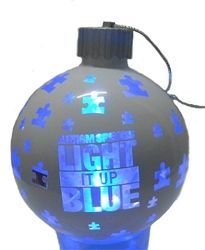


And if your Christmas tree looks like this, please throw it in the trash because it’s hideous beyond words.

Have a Merry Christmas and accept autistic people by NOT supporting an organization that stigmatizes, silences, dehumanizes and makes people afraid of us. <3
2K notes
·
View notes
Photo
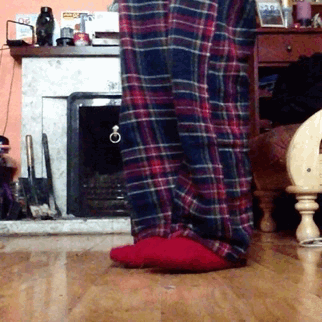




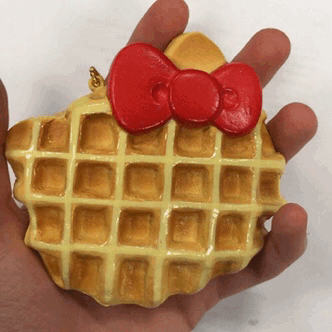

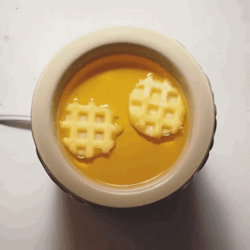


stranger things - eleven stimboard
for anon
dont delete caption ★ sources under cut
Keep reading
231 notes
·
View notes
Text
On Discovering That You're Autistic
How Allistics Assume It Went: Oh woe, I am cursed with a defective, inferior brain! No-one must know my shame. Please pity me.
How It Actually Went: So there’s a reason I’m this way? And there are other people out there who are like me? BAHAHA this is great! No more forcing myself to act “normal” even in the privacy of my own home! No more guilt over being a “weirdo”! To celebrate I’m going to wrap myself in six blankets, crawl under the table and make cat noises for an hour 🐱
4K notes
·
View notes
Text
Autistics with no special interests are valid.
Autistics with special interests that constantly change are valid.
Autistics with special interests that never ever change are valid.
Autistics who lose their special interests, even temporarily, due to depression or trauma are valid.
Autistics with obscure special interests are valid.
Autistics whose special interests are wildly popular are valid.
Autistics with special interests not aimed at their age group are valid.
Autistics who don’t know or can’t remember everything or even much of the details about their special interest are valid.
You’re all great and I love you.
2K notes
·
View notes
Text
Stim with pride!
Today was my “I stim proudly and i don’t care about what you think” day !
In fact, it was the first day of my life in which i actually allowed myself to stim without a second thought. And damn, i feel so good and so full of life ! I think i never felt such a joy to be simply myself since the beginning of my life…
Seriously, why stimming is seen as a bad thing ? When i stim, i can focus my thoughts, express myself better and just be happy overall ! Flapping my hands, fidgeting my hair, allowing my fingers to “dance”…
I mean, it’s not bothering, i don’t injure myself while doing it and i’m not noisy at all. Still, i had some pretty weird looks, but frankly, i don’t care.
Soon, i’ll make some gifs or videos about my stims, i have so much to show (my favorite one is like i was playing an invisible piano with my fingers, it’s very relaxing) !
Proud stimming day !
And like the wonderful Amythest once said…

When we stim, we’re super cool and cute !
476 notes
·
View notes
Link
Reblog to help an autistic American sleep tonight.
18K notes
·
View notes
Photo
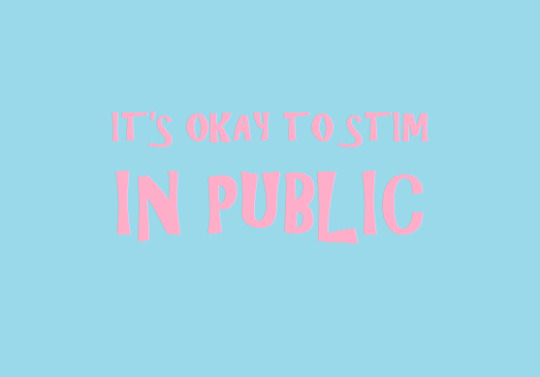


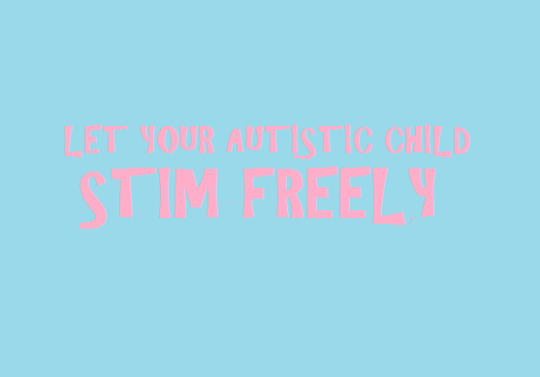
1) It’s okay to stim in public. 2) Normalize stimming. 3) Stimming is a natural part of autistic people’s body language. 4) Let your autistic child stim freely.
3K notes
·
View notes
Photo










Frog Legged Leaf Beetle Stimboard for Anon!
x x x - x x x - x x x
30 notes
·
View notes
Photo



We need to stop seeing autism as some sort of one-dimensional sliding scale. Autism is not a thermometer. It’s not a rating that is “more” or “less”. High-functioning and Low-functioning do not exist in the real world.
Autism is a collection of symptoms and behaviours. Like a sundae bar. You choose your toppings that fit you.
Are you a bipolar extravert that loves socialising, is good at math and bad at remembering time? That’s ONE way to be autistic!
Are you a socially anxious autistic who has meltdowns when your clothes don’t feel right but a genius knowledge of music theory and is great at scheduling? That’s another way to be autistic!
Notice how both of those examples has strengths and weaknesses? Is one more “employable” or “high-functioning” than the other?
There is no one-size-fits-all category or rating for autism.
85K notes
·
View notes
Text
The Autistic Dictionary
I thought I would compile a list of terms and their definitions used by the Autistic community! Some terms are also used by people who are disabled or the general neurodiversity movement.
Applied Behavioural Analysis (ABA Therapy)- A dangerous and harmful therapy used to attempt to make Autistic people behave like allistics. It uses a reward and punishment system, where punishments can include yelling, verbal rebukes, forcibly restraining an Autistic person, withholding food, and electric shocks. It has been linked to PTSD, anxiety, and even regression in multiple cases.
Ableism- The belief, and actions, that contribute to the oppression of disabled people. This includes calling people retarded, denying accommodations to disabled people, or talking over people with disabilities.
Allistic- A term used by Autistic people to describe non-Autistic people.
Anti-vaxxer- Any person that is against vaccines for the sole reason that they cause Autism. Studies have already proved this to be false, and the idea that people would rather risk catching horrible diseases or dying just to avoid ‘catching Autism’ is harmful to say the very least.
Cure culture- The belief, or any action that contributes to the belief, that Autism is a disease and that Autistic people need to be cured in order to be successful and happy. This is incredibly harmful, as a cure has already been proved as impossible and at the very least impractical, and it takes away from the focus on helping and accommodating Autistics as they are.
Echolalia- The mimicking or repetition of certain sentences, songs, or noises. This is often a means of indirect communication for Autistic people.
Functioning labels- Used to describe how ‘severe’ a person’s Autism is. These are generally frowned upon among Autistic people, as it either denies ‘high functioning’ people accommodations or silences their voices, or denies ‘low functioning’ people the ability to choose and decide for themselves.
Identity first language- “Autistic person”. This is the widely accepted way in the Autistic community to describe a person’s relationship with their Autism.
Inspiration porn- The use of images or videos of disabled people to inspire abled people. An example is taking a disabled person’s accomplishments and then adding something like “If they can do it, I can do it!” or “What’s your excuse?”. This practice is gross because it treats disabled people as inhuman trophies to hold up to people without disabilities, and implies that disabled people are here to inspire people who are not disabled.
Meltdown- A breakdown an Autistic person experiences due to stress, often involving sensory overload. It is not simply a ‘tantrum’. Meltdowns can involve screaming, crying, rocking back and forth, curling into a fetal position, head banging and other forms of self harm, and temporary mutism.
Nonverbal- Used to describe someone who is incapable of verbal communication, either permanently or temporarily.
Neurodivergent- A term used to describe anyone with a mental illness, disorder, or disability.
Neurotype- A particular brain chemistry that shares overlapping characteristics among different people. Examples include ADHD, ADD, and Autism.
Neurotypical- A term used to describe anybody without a mental illness, disability, or disorder.
Person first language- “Person with Autism”. This is generally frowned upon in the Autistic community, as it is routinely used to dehumanize Autistic people and silence their opinions. If you are unsure of what to use, use identity first language.
Sensory Processing Disorder- A disorder in which the brain improperly processes sensory information, leading to painful periods known as sensory overload (where a person becomes overwhelmed while processing sights, smells, sounds, tastes, or textures) and sensory underload (where a person begins to feel uncomfortable because of a lack of sensory stimulation). This often goes hand in hand with Autism.
Spoon theory- An explanation used by disabled people to explain their fluctuations in energy and capabilities. A person may start with ten spoons at the beginning of the day, but after washing the dishes and going grocery shopping they lose spoons until they run out of spoons. When a person says that they are out of spoons, they mean that they are exhausted past the point of being able to do anything else without resting.
Stimming- A repetitive motion or action used by neurodivergent people, either to calm down, process sensory information, or just because it is pleasant. Examples include leg bouncing, hair twirling, listening to a song over and over again, or chewing. There are even items called stim toys to provide different ways to stim!
Hope this is helpful! Correct me if I need to change anything!
36 notes
·
View notes
Text
Introduction to the Autistic Community
It has come to my attention that newbies exist as of such I feel that it my duty to educate them the basics of this community.
This is now a Tumblr post rather than page.
Basics
Why Acceptance?
Because autistic people are you friends, family members, children, partners, co-workers, fellow-citizens, customers, and neighbors.
Because autism is a natural part of the human experience.
Because autistic rights are human rights.
Because autistic people can speak for ourselves, and we want you to listen to us.
Because we aren’t going anywhere.
Because this is our world too.
Because there are all kinds of minds, and this world is big enough for all of us.
- autismacceptancemonth.com
Read goldenheartedrose’s Autism 101 post.
Read Archie’s comic about the Autism Spectrum and read the rest of the post. I’m serious read the whole post.
Language Use
Person-first language: “person with disability”. Users of this feel like this places the person first and disability second. Identity-first language: “disabled person”. Users of this feel that person-first language alienates the disability from the person and thus prefer identity-first language. Another reason is it person-first language implies the person-hood is separate from disability thus non-disabled is the norm. Main form of language for the autistic community.
Pick the language that the disabled person prefers. The Deaf, and Autistic community often prefers identity-first language. People with mental illnesses often prefer person-first language. Some have made the observation that younger generations of disabled people prefer identity-first language and older generations prefer person-first language.
Autistic: Autistic with a capital “A” even when non-pronouns would not be capitalized are a way autistic people showing that they identify with neurodiversity and autism rights movement. Based on the Deaf community use of the capital “D”.
Autie: another way of referring to autistic people. Not as commonly used as autistic. Auties are the plural term.
Note: I accidentally stated that autie meant aspie. Sorry for the mistake.
Aspie, asperigian: words for referring to people with Asperger’s syndrome. Aspie, and asperigian are the singular terms and aspies, and asperigians are the plural terms. Aspie is used occasionally in the autistic community.
Key Figures
Some organisations you should know, can’t list them all cause there are too much.
Thinking Person’s Guide to Autism: A website about autism from the views of autistic people, allistic parents of autistic children, and medical professionals. Their Website.
ASAN: Autistic Self Advocacy Network. An organisation run by autistic people dedicated to advocating for autistic needs and rights. Their Website. Their Tumblr.
AWN: Autism Women’s Network. A website dedicated to supporting autistic women. Their Website.
Individuals
Sorry, too much to list. I will list some people, not all.
Cynthia Kim: Website.
Temple Grandin: Website. Note: Some in the community would say she is an aspie elitist. Source..
Amy Sequenzia: Website. Twitter.
Amythest: Tumblr. Youtube channel.
Lydia X. Z. Brown: Website.
Dani Alexis Ryskamp: Autism Blog.
Helpful Links
Autism Resources by Kit Mead
Resources by autismacceptancemonth.com
Meltdown VS Tantrum here.
Autistic Meltdown Guide by bitterautistic
Wikihow’s Autism Spectrum Category.
Autism Self Diagnosis Tools list by bitterautistic.
Neurowonderful’s youtube channel.
Glossary
There are more terms than these but these are the most basic.
General Disability
Ableism: Discrimination or prejudice against disabled people on the basis of their disability or disabilities. Check out my post for here.
I’m a big fan of AAC. I’m not a big fan of it being considered alternative, rather than just being one more equal way of communicating. I don’t much like the idea that it should be an alternative, because that suggests that if you can use “typical” communication, then you should.
- Alyssa Hillary
Augmentative and alternative communication: AAC is the acronym for augmentative and alternative communication. AAC encompasses all methods of communication for non-verbal people that are alternatives to speaking and writing. Sign language is a prominent type of AAC for deaf people.
Able-bodied: adjective referring to someone with no physical disability.
Self-advocacy: a person who advocates for themselves. In the disability community, this term is often used to refer to disabled people advocating for their rights.
Spoon Theory: created by Christine Miserandino. The spoon theory uses spoons to represent the energy levels of some chronically ill people. People with chronic illness often have very limited levels of energy. Tasks take up spoons. For a quick and more through explanation of spoon theory go here. Original article by Miserandino here.
Some disabled people do not use the spoon because the spoon theory does not fit them. Some disabled people do not know how many spoons they have.(warning: The Mighty link) Some have the energy levels of a neurotypical.
This is a shout-out to all the kids — all the kids living with so much severe pain you wouldn’t believe it yourselves, because it is your normal. And you go on trying to do normal stuff. And sometimes you can’t. Sometimes the pain just grips hold and you have no means to deal with it. But you don’t know you’re in pain, so you push against it, and you think you’re weak, everyone else can do this, why not you?
Why not you? Because you’re in severe pain and you don’t even know it. You may not even recognize it as pain, because pain is such a broad and nebulous category.
My heart goes out to every single one of you.
- Meg Baggs
Chronic Pain: pain that lasts indefinitely or long-term.
Professional Diagnosis: a medical diagnosis made by a medical professional or medical professionals.
Self Diagnosis: a medical diagnosis made by a non-medical professional by oneself.
Medical model of disability: the opposite of the _Neurodiversity Paradigm._ This model classifies all disabilities as abnormal, seeks to cure all disabilities and ensure all humans are living normal lives.
Social model of disability: according to this model, all or most of the struggles of being disability have to do with society. For example: society may not fund AACs for a deaf person.
Autism
It’s possible to stim with any of your senses. Spinning and doing things to make you dizzy are forms vestibular stimming. :D
- A Butterfly in the Well
Stimming: repetition used by some types of disabled people; especially autistic people; to self-simulate their senses. For more go here.
Autism Parent: a term for parents with autistic children. Often used by allistic parents of autistic children such to the distaste of many autistic people. It seems that most autism parents are opposed to autism acceptance although some support it.
Allistic: meaning not autistic. Note: does not mean neurotypical.
Asperger’s syndrome: a now obsolete diagnosis for autistic people deemed high-functioning other than high-functioning autism. This diagnosis got merged into the autism spectrum. In general somewhat disliked by members of the autistic community- for why see here. Many autistic people use autistic as an umbrella term covering Asperger’s syndrome instead of using the term “Asperger’s syndrome.”
Autism Acceptance: the idea that autistic people are part of human diversity, autistic people are perfectly fine autistic; that they don’t need to be healed of autism; and that autistic people deserve rights. _For more go here._
Cousin: an affectionate term used to describe people with disorders similar to autism. May also be used by people with other disorders to describe people with disorders similar to theirs. More context here.
Tone it up Taupe: a parody campaign during April for curing allism.
#REDinstead: wearing red instead of blue during April to celebrate Autism Acceptance Month.
Autism Acceptance Month: A month (April) for raising Autism Acceptance. This re-branding of April is to protest Autism Awareness Month.
The difference between high functioning autism and low functioning is that high functioning means your deficits are ignored, and low functioning means your assets are ignored.
Laura Tisoncik
Functioning Labels: Labels used to indicate severity of a disorder. Many in the autistic community dislike functioning labels as neurotypicals may treat autistic people differently based on their functioning label, base an autistic person’s worth on functioning labels and divide the autism spectrum into two parts. Note: functioning labels are used for other disorders too but its use is particularly prominent in autism medical circles.
Support Levels: An alternative to functioning labels made by an autistic person. For more information go here. There is criticism that support labels are a sugar coated version of functioning labels.
Ok, there are a lot of neurodiversity words that I can’t fit in here. For more go to Neurocosmopolitanism.
Neurodivergent: an adjective meaning not neurotypical.
Neurotypical: person who does not have any disorder concerning the brain.
Neurodiversity: refers to the differences in and diversity of human brains.
Neurodiversity P**aradigm:** a paradigm that proposes that mental disorders, neurological disorders(referring to neurological disorders that affect the brain) are just ways of being human and that there is no right way of a brain to be.
More words and pharses go to Mawson’s list of terms and phrases used in the Autistic community and autistic-bee’s autistic dictionary (may overlap with this)
Tumblr
**#actuallyautistic and #actually autistic: **hashtags used by the autistic community on Tumblr.
#autism: hashtag used on post related to autism. Warning: the hashtag may contain ableism.
#stim and #stimming: contains information about stimming and content to stim with like gifs. There are more hashtags specialized to a certain type of stimming like #audio stimming and #visual stimming.
Trigger Warning: These terms may be triggering.
ABA: Applied Behavior Analysis. A form of therapy that many in the autistic community despise. ABA is known as the gold standard therapy for autism. For more see assessment of ABA
Therapy-induced Trauma: PTSD caused by therapy.
A$ just cares about money and getting attention but doesn’t care about providing accurate, positive, useful information.
-Bitter Autistic
Autism Speaks: an organisation researching the cure to autism, advocating ABA therapy. Autism Speaks is hated in the autistic community. Autism Speaks is also called “Autism $peaks” and abbreviated as “A$” in the autistic community to put emphasis their despise on Autism Speaks’ money spending habits. For more see Autism Speaks Masterpost
Autism Awareness Month: Autism Awareness month is in April. This month is for raising awareness about autism.
Light it up blue: An Autism Speaks campaign for raising awareness about autism by wearing blue clothes.
Debunking
Context Warning: for anti-vaccine, bio-med, child abuse, death and ableism.
Here are resources for countering anti-vaxxers, bio-med autism parents etc.
The Definitive Reference Guide to Debunking the Vaccine-Autism Myth by Liz Ditz and Angry Autie.
Left Brain Right Brain Website Note: contains debunking of bio-med and anti-vaccine nonsense. CW for child abuse, infanticide, anti-vaccine.
Busting myths: a practical guide to countering science denial by John Cook
To stop anti-vaxxers, you need to understand them.
I was easily sucked in. I was easily manipulated into becoming completely and utterly fearful of vaccines.
-Ashley Chapman
15 Myths About Anti-Vaxxers, Debunked by Tara Haelle
9 myths about vaccines and the anti-vaxxer movement by German Lopez
Anti-Vax to Pro-Vax Category on Voices for Vaccines website Note: contains the personal experiences of people who used to be anti-vaxxers but are now pro-vax.
1K notes
·
View notes








